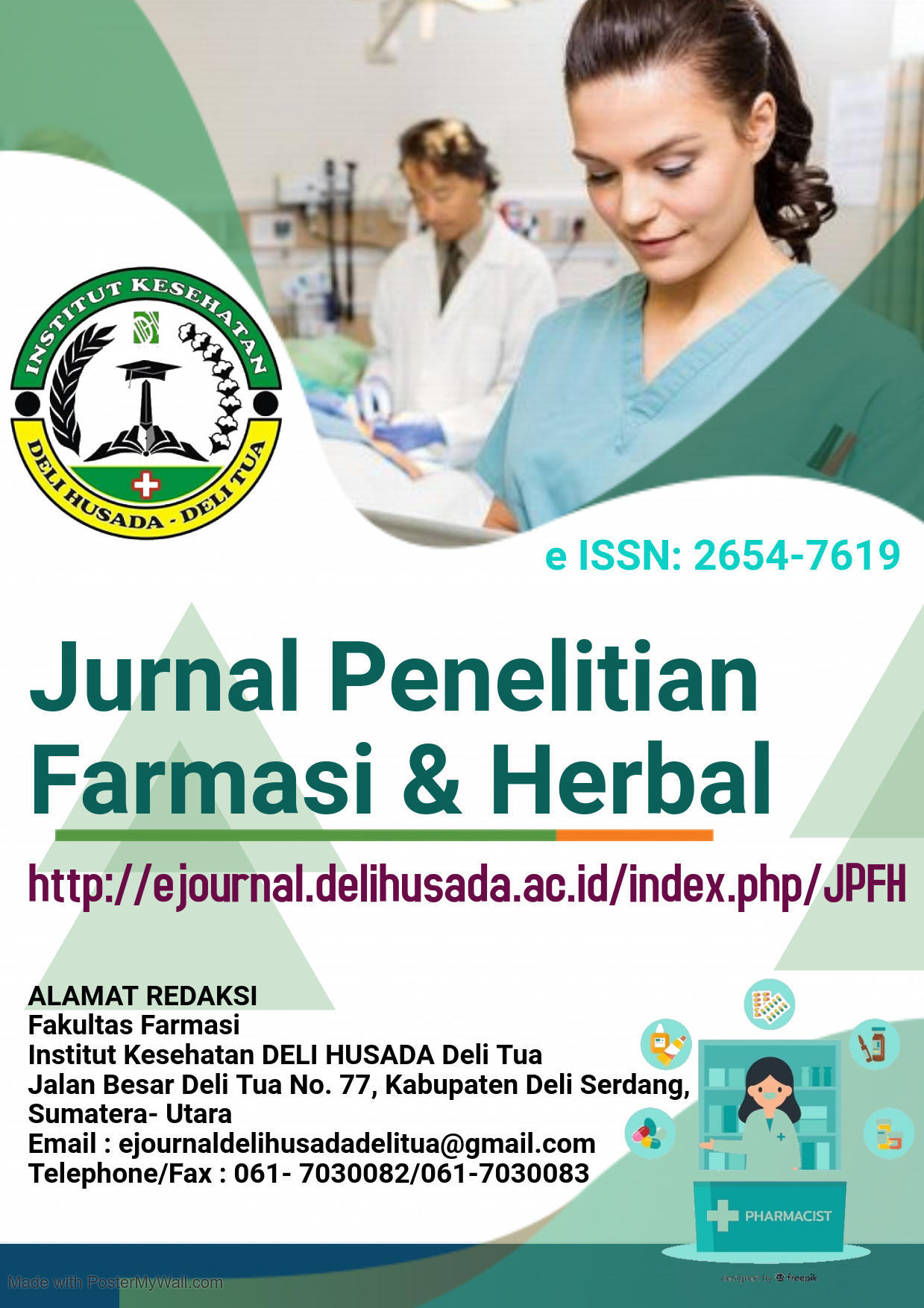ANALISIS KANDUNGAN KAFEIN PADA MINUMAN KOPI SIAP SAJI MENGGUNAKAN METODE KROMATOGRAFI LAPIS TIPIS-GAMBAR DIGITAL
Abstract
Caffeine is a colorless, crystalline powder that has a slightly bitter taste. One of them is ready-to-drink coffee, which can help increase concentration and is much loved. This study aimed to develop a semi-qualitative analysis of caffeine compounds in ready-to-drink coffee using the TLC method. The mobile phase used was methanol: ethyl acetate: acetic acid (3:1:6) with a saturation time of the mobile phase in the chamber of 20 minutes, and the stationary phase used silica gel 60 F254. The results obtained have a linearity (r) of 0,991413. As for the caffeine content in ready-to-drink coffee brand A was 99,37 mg; brand B was 144,81 mg, and brand C was 96,42 mg. It can be concluded that digital image processing using the semi-quantitative TLC method of ready-to-drink coffee contains positive caffeine compounds
Downloads
References
BPOM. (2005). Keputusan Kepala Badan Pengawasan Obat dan Makanan Republik Indonesia Nomor HK.00.05.23.3644 tentang Ketentuan Pokok Pengawasan Suplemen Makanan. 26.
Grosso, L. M., & Bracken, M. B. (2005). Caffeine metabolism, genetics, and perinatal outcomes: a review of exposure assessment considerations during pregnancy. Annals of Epidemiology, 15(6), 460–466. https://doi.org/10.1016/j.annepidem.2004.12.011
Manthorpe, D. P., & Lockley, W. J. S. (2013). Digitally enhanced thin layer chromatography: Further development and some applications in isotopic chemistry. Journal of Labelled Compounds and Radiopharmaceuticals, 56(11), 544–552. https://doi.org/10.1002/jlcr.3052
Martono, Y., & Martono, S. (2012). Analisis Kromatografi Cair Kinerja Tinggi Untuk Penetapan Kadar Asam Galat, Kafein Dan Epigalokatekin Galat Pada Beberapa Produk Teh Celup. AgriTECH, 32(4), 362–369.
Putri, D. D., & Ulfin, I. (2015). Pengaruh Suhu dan Waktu Ekstraksi Terhadap Kadar Kafein dalam Teh Hitam. Jurnal Sains Dan Seni ITS, 4(2), 2337–3520.
Putri, G. S. (2020). Kafein Bisa Membantu Meredakan Sakit Kepala Migrain, Asal ...". Kompas.Com.
Rialita Kesia Maramis, Gayatri Citraningtyas, F. W. (2001). Analisis Kafein dalam Kopi Bubuk di Kota Manado Menggunakan Spektrofotometri Uv-Vis. Jurnal Ilmiah Farmasi PHARMACON, 2(4), 123.
Risthanti, R. . (2020). Penetapan Kadar Kukurminoid Dalam Ekstrak Campuran Curcuma domestica Val dan Curcuma xanthorrhiza Roxb. Sebagai Bahan Baku Jamu Saintifik Secara KLT-Densitometri. Pharmaceutical Journal of Indonesia, 1(2020), 57–62.
Setyoningsih GI. (2019). Penetapan Kadar Kafein Dalam Kopi Bubuk Murni Robusta Merek “X” Dengan Metode Kromatografi Lapis Tipis (KlT) - Densitometri. Fakultas Farmasi, Universitas Sanata Dharma, Yogyakarta, 1(1), 1–13.
Silviana, E., & Santika, M. (2020). ANALISIS KANDUNGAN KAFEIN PADA KOPI SEDUHAN. 8(1), 1–12.
Yuangsoi, B. (2008). Validated TLC-densitometri analysis for determination of carotenoids in fancy carp (Cyprinus carpio)serum and aplication for pharmacokinetic parameter assessment. Songklanakarin Journal of Science and Technology, 6(30), 693–700.







